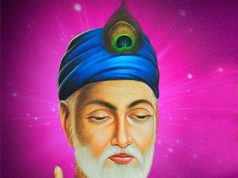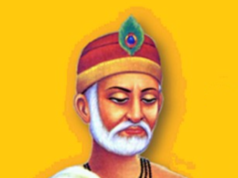The recently held Jaipur Literature Festival stirred up a controversy as a result of its organisers’ decision to invite two RSS functionaries. For many, this was unexpected and undesirable, while for others, it was just an unusual happening. This demonstrates that the exclusion of the RSS from intellectual discourse is considered legitimate and moral by the hegemonic class of intellectuals — predominantly Marxists and Nehruvians. Such exclusion was based on the presumption that the RSS represents majoritarian communalism and “fascism”, and therefore, the only discussion needed is on how to combat it.
Interestingly, despite the close interdependence of intellectual streams, such suppression did not work in politics. There is no political force, Right or Left, in Indian politics which has not allied with the RSS via its political fraternity — the Bharatiya Jana Sangh (BJS) or the Bharatiya Janata Party (BJP). In 1967, the CPI justified its alliance with the BJS not as a sop but based on concrete programmes. It was attacked by the CPM, which itself colluded with the RSS during the Emergency and later in 1989 to form the V.P. Singh government. Socialists have frequently cohabited with BJS/BJP and RSS.
However, secularist intellectuals continued to exhibit rigidity. The polemic this has spawned has been unique, with a devastating impact on both the Right and the Left. Each sees the other with contempt and suspicion. Ideological discourse has degenerated into sloganeering, freeing it from the burden of thought, debate and logical contestation. The Nehruvian Left propagated its main task as that of combating the RSS and its alleged communalism. Conversely, Right intellectuals, however few in number, grew in a milieu of fighting Left domination. This is the crisis of Indian intellectualism.
State patronage to intellectuals has killed their independent and critical spirit. India was known for its intellectual legacy and primacy, but these have declined, with politicisation stymieing any introspection into its reasons. Over time, intellectuals faced the indifference of society .
This is best illustrated by an editorial in The Statesman, “Democracy’s Ingratitude” (May 22, 1932), after the death of one of India’s foremost thinkers, Bipin Chandra Pal: “All the nationalist papers pay high tribute to the late Bipin Chandra Pal, who is acclaimed as one of the men who gave the nationalist aspirations of India a voice. In death, his services are recognised. In life, he might have starved for all the help he received from those who now acclaim his genius. For seven years and more, he had been dependent for a platform on European-owned newspapers and there are many letters in our files emphasising the fact that no other outlet was open to the ablest pen that has served the cause of India.”
Far from mending its ways, the post-Independence polity considered intellectuals as playing second fiddle in statecraft. This tragedy was compounded by the imposition of sectarianism on academic and intellectual life, with healthy debate and discussion banished by the binary between “secular” and “communal”.
The binary has been institutionalised, and in a cruder form, gave birth to anti-RSSism as a permanent feature of dominant intellectualism in India. It carried twin advantages. One, it was a convenient political symbol with an intellectual tag and second, it jettisoned alternative narratives as a negation of the idea of India. Anti-RSSism accords priority to targeting the RSS, more than the ideas it espouses.
Intellectualism, which is a prisoner of perception, faces inner contradictions. Take the second “Convention Against Communalism” organised by the Sampradayikta Virodhi Committee (SVC) on December 28-29, 1968, in Delhi. The SVC was formed by Subhadra Joshi, a leftist-turned-Nehruvian and had the single-point agenda to slander the RSS.
Jayaprakash Narayan, a socialist, chaired the convention. Intervening in the debate, he said, “the impression should not go that convention was organised to oppose the RSS”. D. Sanjivayya, who inaugurated the convention, challenged Joshi’s argument that minority communalism could be excused. In 1978, the SVC again organised a seminar on the “Character of RSS” and the chorus — “RSS is a threat to democracy and secularism” — was repeated. But Joshi now found opposition from an unexpected corner — CPM leader Zahoor Siddiqui. He observed, “it was not the RSS that imposed the Emergency. There was no Golwalkar at Turkman Gate, Muzaffarnagar or Pipli.”
An influential section of Nehruvian-Left intellectuals used the fig leaf of the RSS to acquire political privilege and in return, acted by legitimising anti-RSS politics. This led not only to the segregation of intellectuals but also eroded the thin difference between party literature and academic output, particularly on nationalism, secularism and culture. This is a great loss which has remained uncompensated. Therefore, while the appointments of intellectuals participating and contributing in SVC or later, SAHMAT, or similar Left-leaning organisations do not evoke controversies, any RSS connection becomes the only reason to oppose an appointment.
In India, the anti-RSS propaganda has been led by those whose academic embellishments appear grand, but who have promoted segregation. It has choked voices and attacked the morality of those whose thinking is beyond the sectarian academic and intellectual culture.
Polemics cannot be a permanent feature of any thinking society. That is why the alternative narratives of the RSS on nationalism, secularism, culture and economy present complex dilemmas to those infected with toxic anti-RSSism. It is also why the RSS’s presence at the JLF irked those who consider intellectualism a monopoly of a particular stream and cannot accept the demolition of monolithic debate and the emergence of the dialectics of diversities.
By Dr Rakesh Sinha
The writer is associate professor, Delhi University and honorary director, India Policy Foundation














